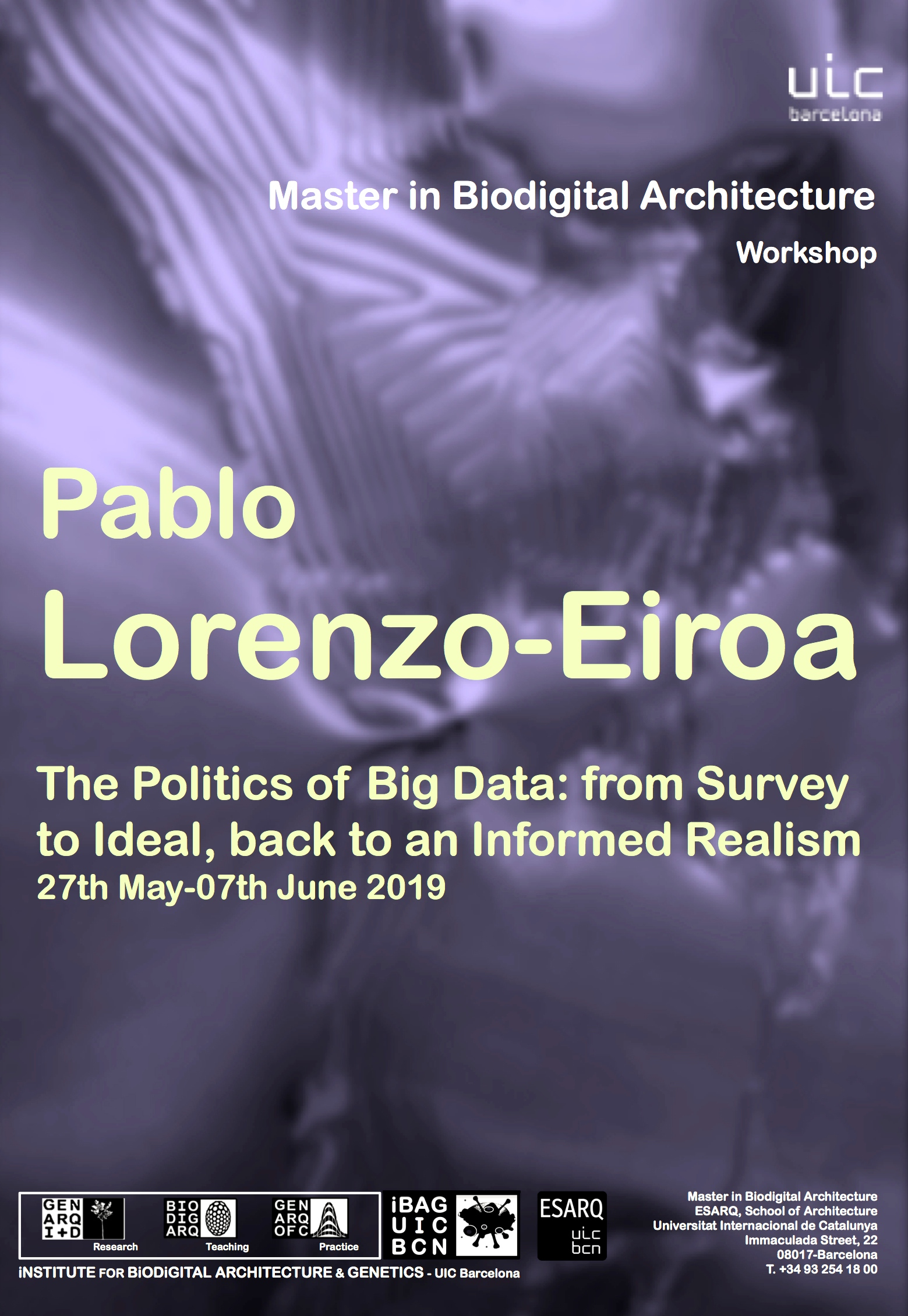UIC Barcelona,
Biodigital Master Program, Director Alberto Estevez,
2019 Professor Pablo Lorenzo-Eiroa

“Biodigital Architecture
Master Program”, Director Alberto Estevez, Studio: “The
Politics of Big Data: From Survey, to Ideal, back to an
Informed Realism” by Invited Associate Professor Pablo
Lorenzo-Eiroa UIC, Studio Summer 2019. Students:
Abdulrahman Al-Harib , Valerija Galkina; Secil Afsar,
Joy Nakad, Margaret Tara Maalouf; Alexandros Mpougas,
Adan Orozco; Iris Andrea Florez Salamanca, Gabriela
Bello Ugalde; Mariam Jalloul; UIC 2019 Biodigital Master
Studio in Barcelona June 3-June 7th 2019.
Studio Brief:
The Temple Expiatori de la Sagrada Familia is a catholic
basilica (2010) originally designed by Antoni Gaudi
(1852-1926). The church construction began, as a
social-political project, in 1882 and it is purposely
design and built in parallel to the advancement of its
society and through multiple generations, as it happened
with churches of the gothic. This is the reason why it
is not yet completed, and it is anticipated to be
finished due to accumulated funding by 2026. There have
been multiple shops in charge of the construction of the
church, and as each shop interpreted the drawings,
experiments and catenary models by Gaudi. Gaudi
innovation for this building consisted on developing a
scientific form-finding structural mechanism through
analog physical models that work through catenary
forces. The form of the building is dependent on
physical scaled models that are used to calculate the
structure of the building by catenary structures.
Different interpretations of the building’s design came
to progressively be built thinking the project’s design
process and construction as an evolutionary system,
studying, displacing and evolving Gaudi’s design as a
live process updated by cultural projects as well as
technological advances. Jordi Bonet I Armengol and Mark
Burry (executive architect and researcher) have been
introducing advances in digital technologies since 1980
and different research has been then incorporated,
advancing the construction of the church, including
computer software, computer numeric control machines and
3d printing.
The UIC studio headed by Visiting Associate Professor
Pablo Lorenzo-Eiroa worked with Antoni Gaudi's Sagrada
Familia thinking its evolutionary design process and
towards its completion. Using the opportunity to rethink
its design as its gets built deviating from the original
project, the studio worked on an analysis and latent
relationships to displace the original design.
The Studio first surveyed the building through Big Data
gathering and processing, understanding the act of
survey as an initiator of the design proposal. Then the
studio worked out latent relationships in the building
through Big Data processing using dynamic structural
simulation and optimization. Therefore the studio,
following Gaudi, related form to structural performance
through dynamic interactive computational systems. The
objective of the studio is to compare the original form
of the surveyed building to a contemporary means to
measure catenary forces, and from this analysis,
critique, find problems and expand opportunities to
displace Gaudi’s strategies.